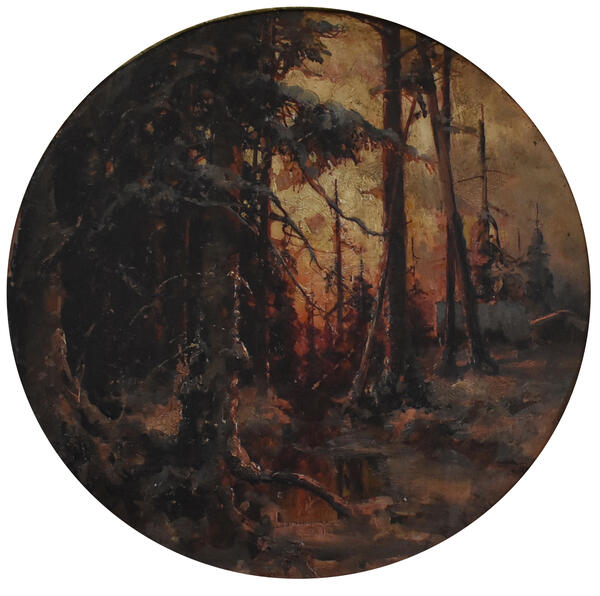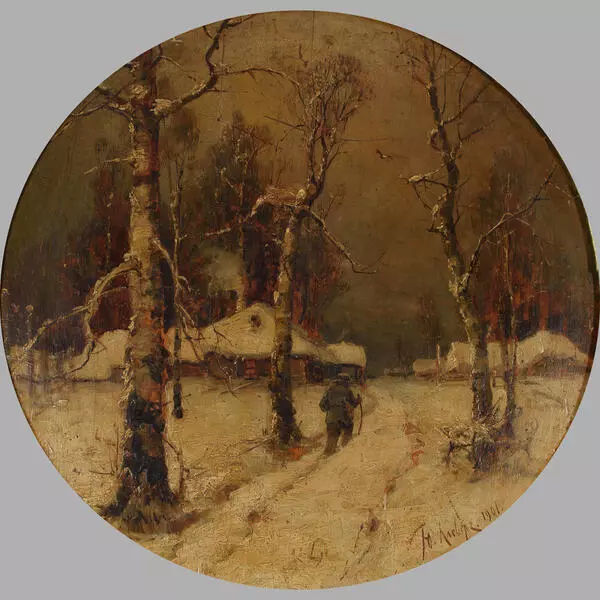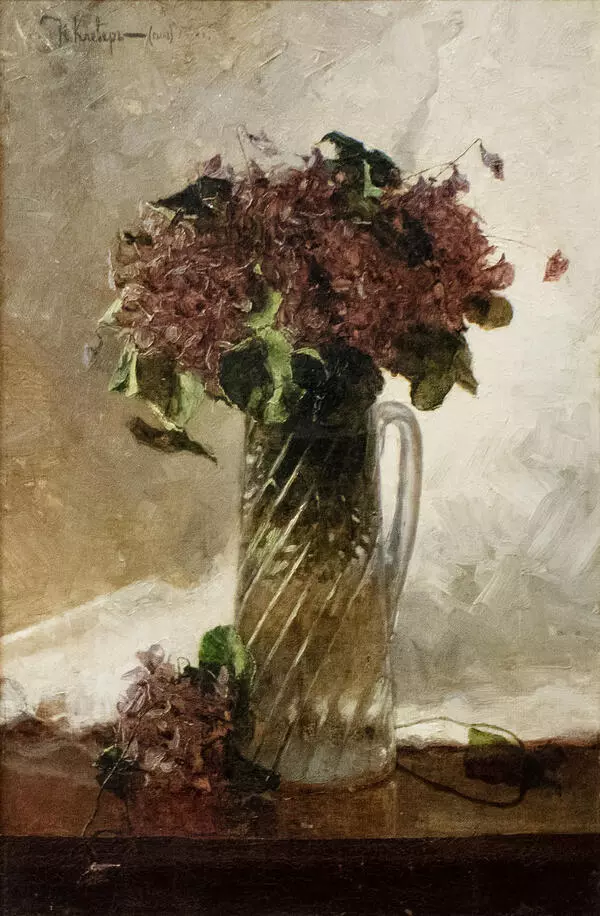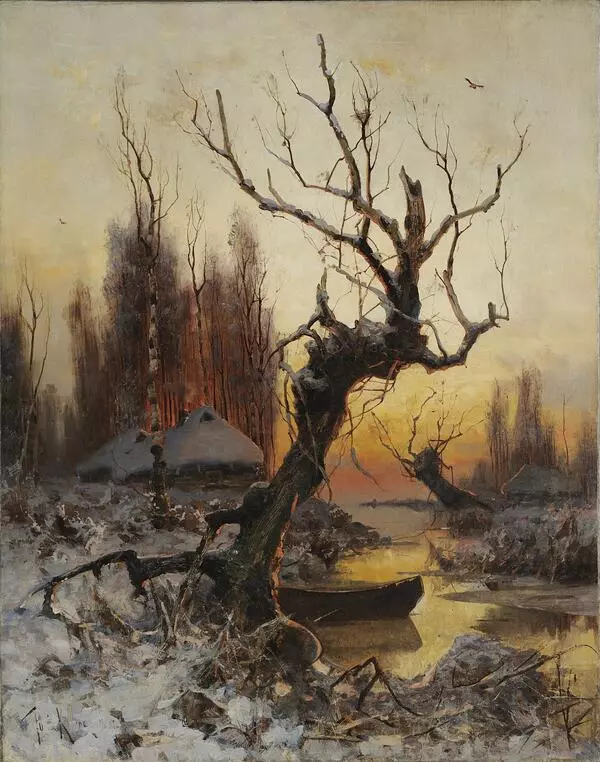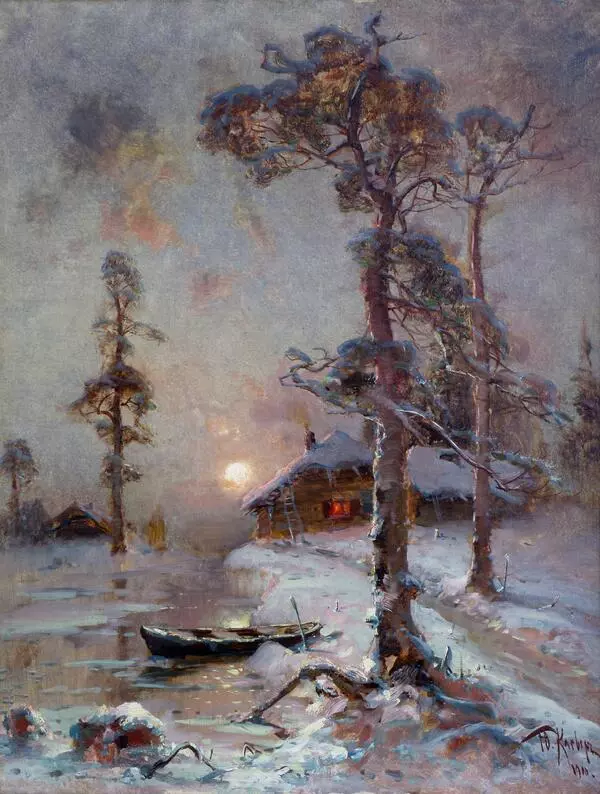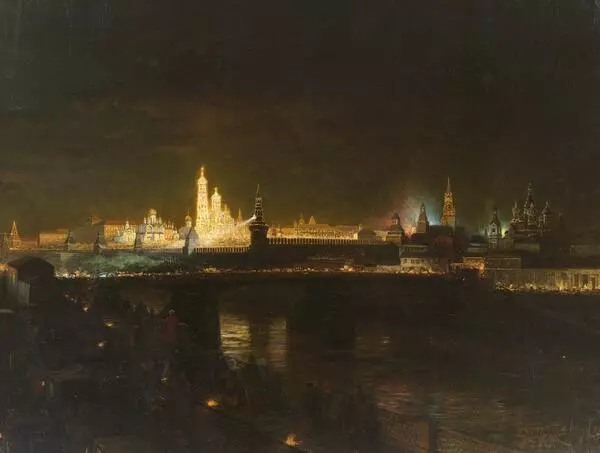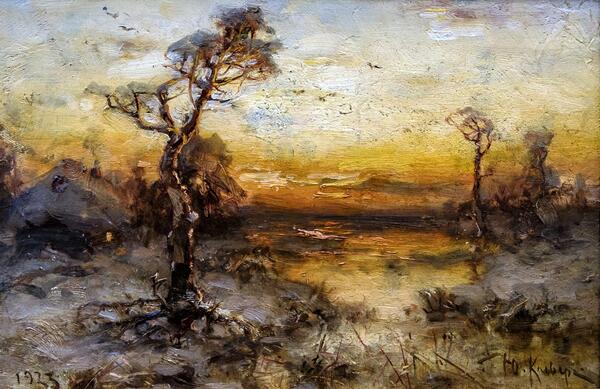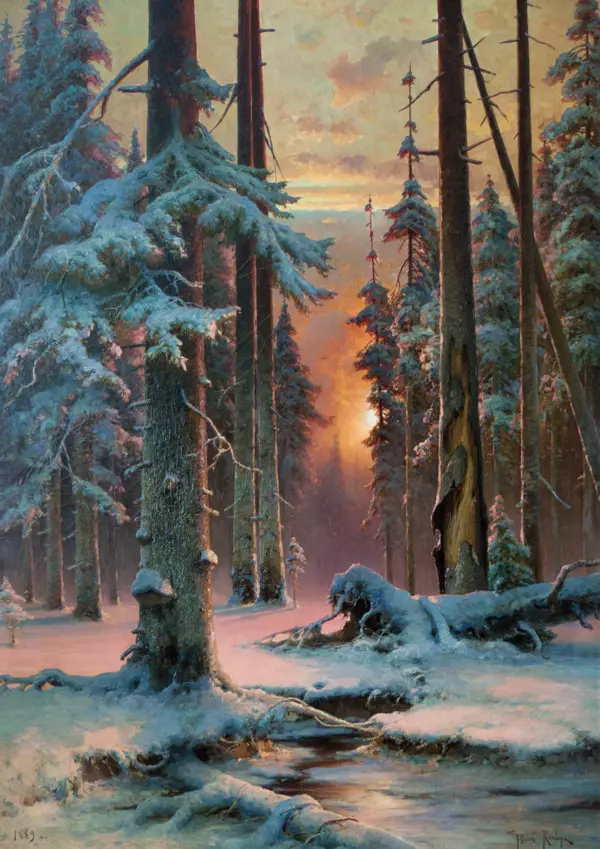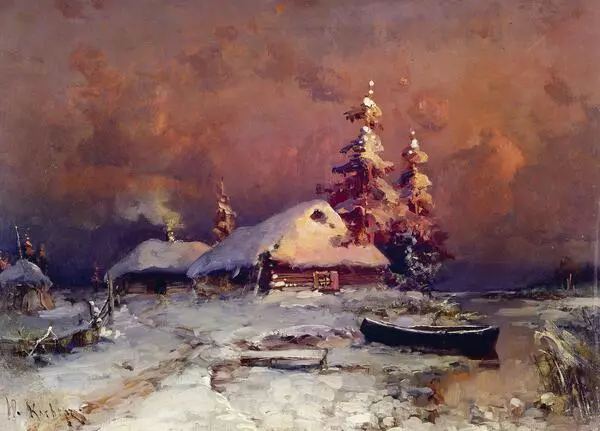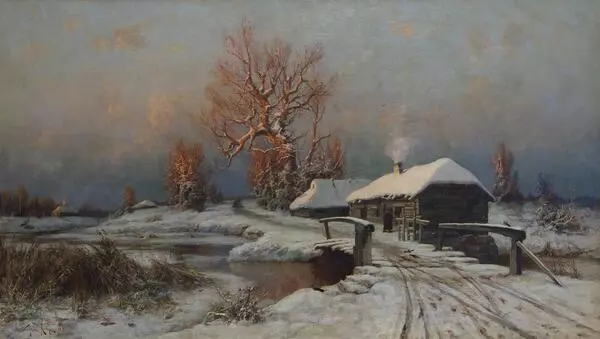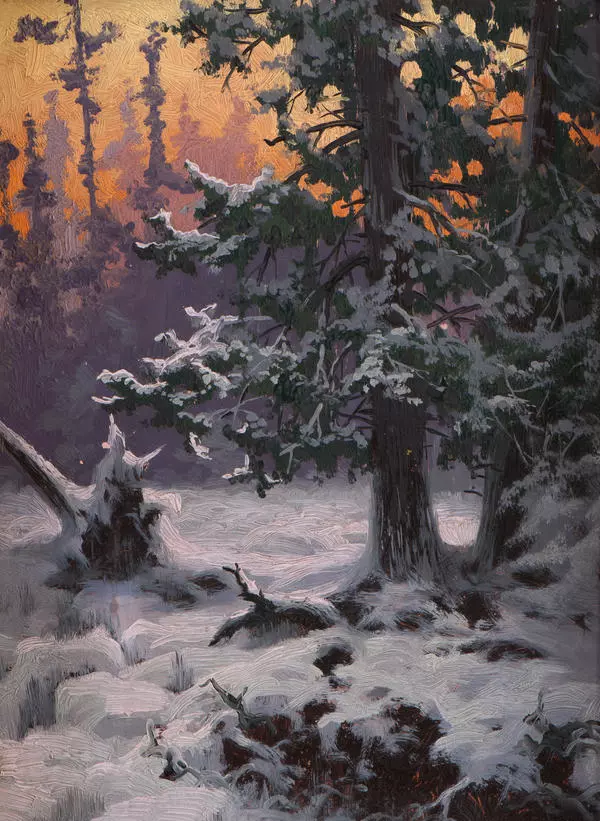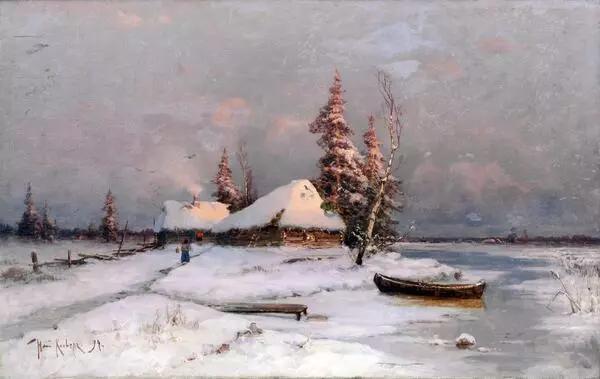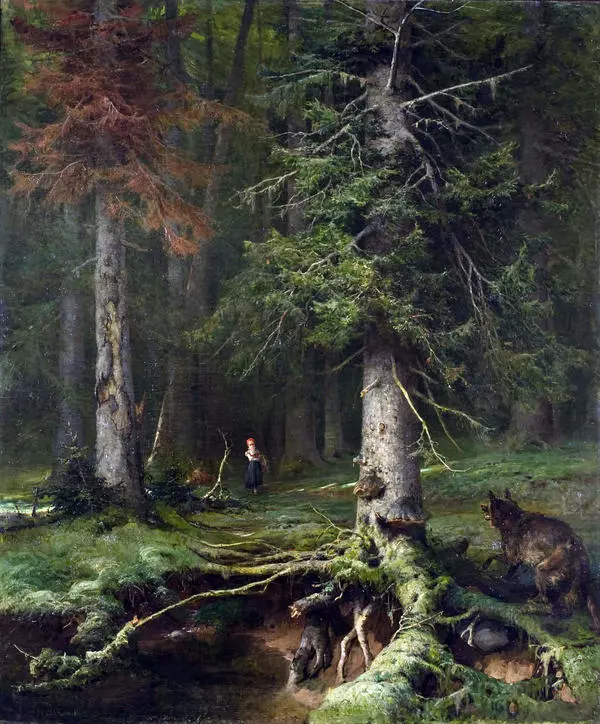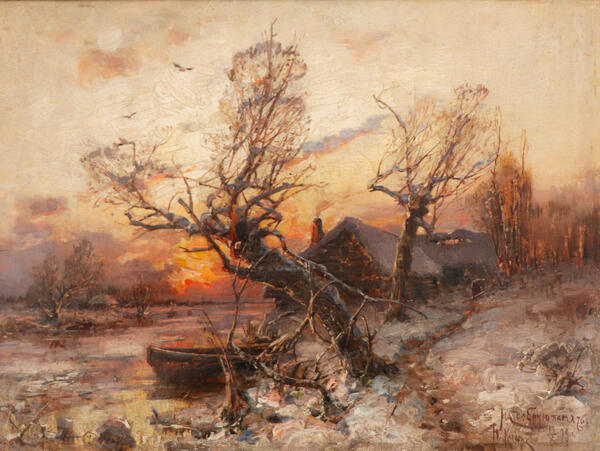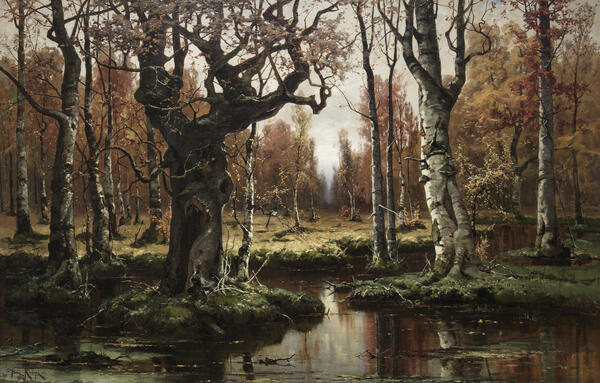Julius Yulievich Klever was born in 1850 in Dorpat in the family of a chemistry teacher. After finishing a local gymnasium, he entered the Academy of Fine Arts in St Petersburg, where he gained sufficient experience and invaluable artistic skills, studying painting under such famous artists of his time as Socrat Maximovich Vorobiev and Mikhail Konstantinovich Klodt. His first solo exhibition was held in 1874 on the stands of the Society for the Encouragement of Arts.
In the 1890s, as a result of some developments, the artist hastily left for Germany. He was brought in as a witness in a high-profile case of financial abuse of his good acquaintance Iseev, a former employee of the Academy of Arts. The Klever family returned to Russia only in 1915. Immediately after his return home he put on an exhibition in Moscow. The artist taught at the Academy of Arts for the rest of his life.
The artist’s landscapes were a great success with connoisseurs of Russian fine art. Julius Klever knew how to create unique canvases, filling them with lively and expressive color. Thanks to his highly individual technique of painting, the artist was able to convey a special dreamlike, esoteric and allegorical sense of surrounding reality. This effect was achieved by the artist’s ability to depict light in a skillful and distinctive manner.
The painting “Pine Forest” shows how the artist succeeded in depicting the sunlight. The landscape is permeated with the light of the setting sun, which penetrates into every detail and covers almost the entire space of the composition. The overall picture of early spring is emphasized by the flooding of a small river, which is located in the very center of the painting. The artist’s skill in depicting snow should be particularly highlighted. In the background, the general view of nature is harmoniously complemented by the image of old houses with their roofs still covered by a mantle of snow.
Numerous admirers of Julius Klever’s work, among whom were members of the royal family, admitted that he creates his outstanding landscapes in an innovative style, often opting for quite original and unconventional solutions. That is why, as many experts believe, the painter Julius Klever was able to convey fully the special beauty, mystery and magic of Russian nature.
In the 1890s, as a result of some developments, the artist hastily left for Germany. He was brought in as a witness in a high-profile case of financial abuse of his good acquaintance Iseev, a former employee of the Academy of Arts. The Klever family returned to Russia only in 1915. Immediately after his return home he put on an exhibition in Moscow. The artist taught at the Academy of Arts for the rest of his life.
The artist’s landscapes were a great success with connoisseurs of Russian fine art. Julius Klever knew how to create unique canvases, filling them with lively and expressive color. Thanks to his highly individual technique of painting, the artist was able to convey a special dreamlike, esoteric and allegorical sense of surrounding reality. This effect was achieved by the artist’s ability to depict light in a skillful and distinctive manner.
The painting “Pine Forest” shows how the artist succeeded in depicting the sunlight. The landscape is permeated with the light of the setting sun, which penetrates into every detail and covers almost the entire space of the composition. The overall picture of early spring is emphasized by the flooding of a small river, which is located in the very center of the painting. The artist’s skill in depicting snow should be particularly highlighted. In the background, the general view of nature is harmoniously complemented by the image of old houses with their roofs still covered by a mantle of snow.
Numerous admirers of Julius Klever’s work, among whom were members of the royal family, admitted that he creates his outstanding landscapes in an innovative style, often opting for quite original and unconventional solutions. That is why, as many experts believe, the painter Julius Klever was able to convey fully the special beauty, mystery and magic of Russian nature.

